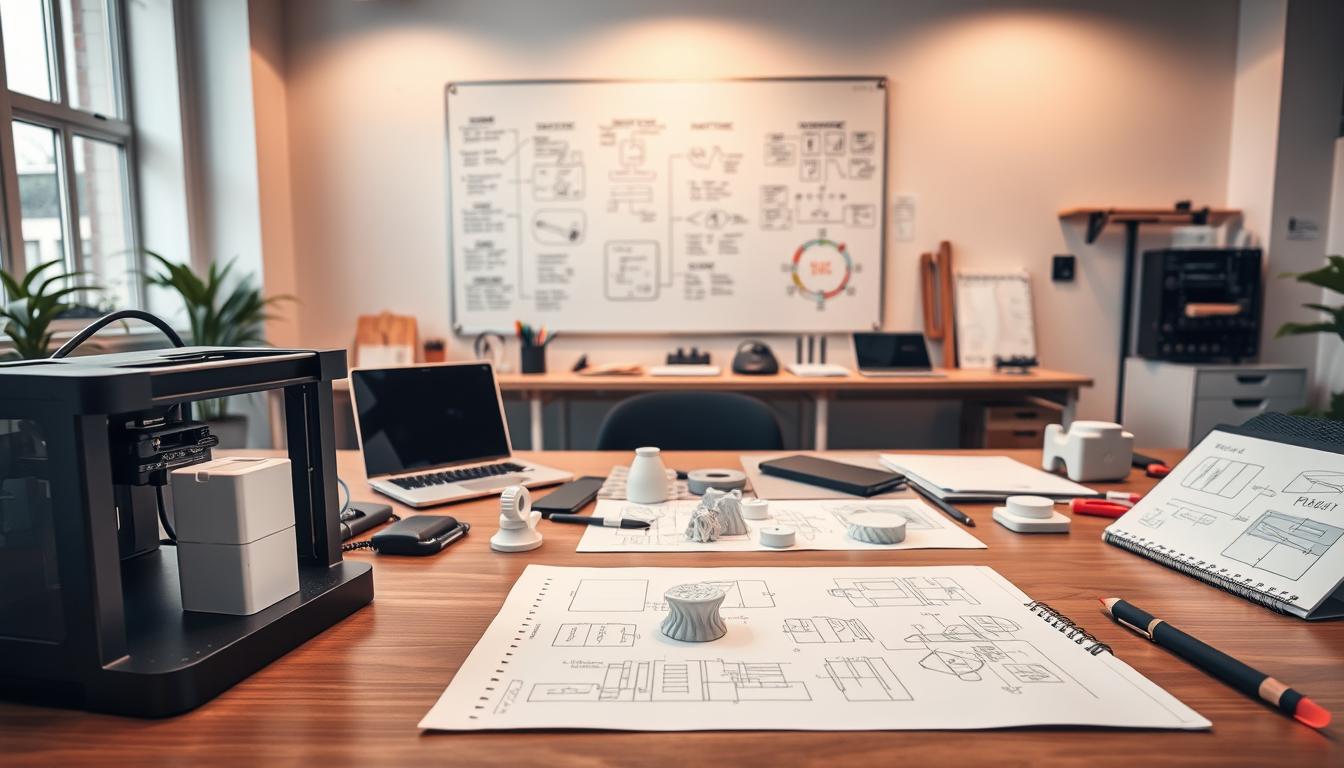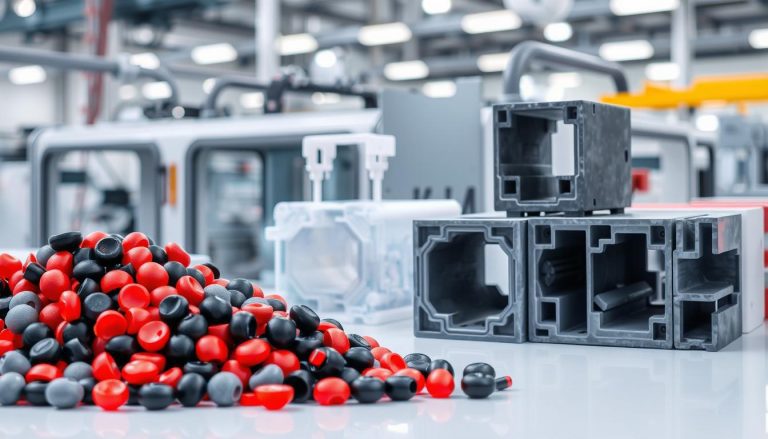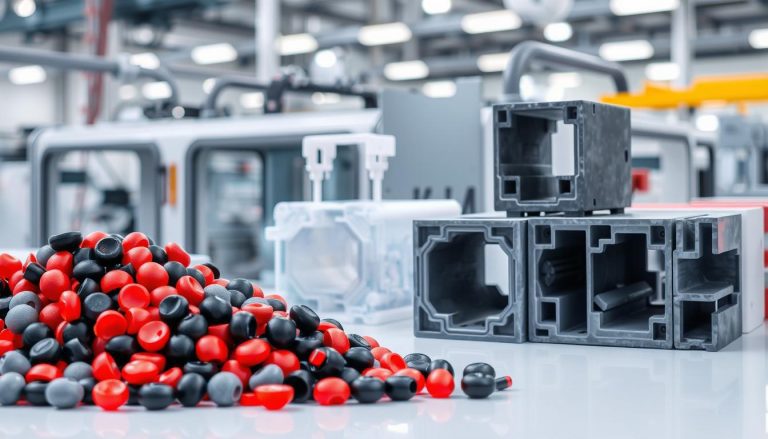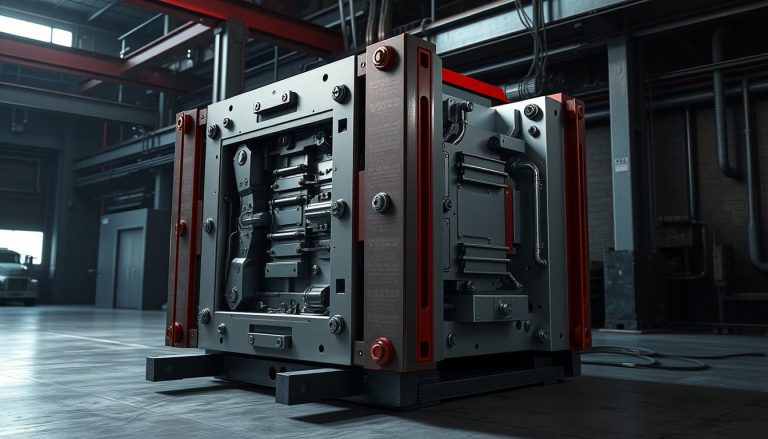The latest innovations in rapid prototyping There are constantly new developments in the field of rapid prototyping. These are changing how we develop products. We take a look at the most important trends, technologies and materials.
These innovations make 3D printing and prototype production faster and cheaper. They offer engineers and technical decision-makers valuable insights. Discover how rapid prototyping is influencing modern manufacturing and how you can benefit from it.
Key findings
- Rapid prototyping promotes efficiency in product development.
- Technological innovations in 3D printing open up new possibilities.
- Biocompatible materials are revolutionizing prototype construction.
- The connection between the physical and digital worlds is becoming increasingly important.
- Software innovations increase the efficiency of prototyping.
Introduction to rapid prototyping
The basics of rapid prototyping offer a new way to make prototypes quickly. Companies can create prototypes that serve as test objects for various designs. This makes it possible to quickly turn ideas into real models and find creative solutions.
Rapid prototyping uses various manufacturing processes such as 3D printing, CNC machining and injection molding. Each process has its own advantages, depending on the project requirements. This allows companies to quickly implement new ideas and position themselves on the market.
Rapid prototyping is an important technology. It helps to adapt quickly to market conditions and customer requirements. The ability to adapt and improve prototypes quickly is very important for success in product development.
The importance of rapid prototyping in product development
Rapid prototyping is an important part of product development. It helps companies to get feedback from customers quickly. This allows designers, engineers and marketing teams to work better together.
This speeds up the innovation process enormously. It also reduces the risk of making expensive mistakes. Prototypes can be made and tested quickly.
This enables companies to learn a lot about their products. Early testing reduces uncertainties. It increases the success of a product.
Rapid prototyping also improves product quality. Problems can be solved quickly through constant improvements and feedback. This makes the development process more efficient and increases customer satisfaction.
Innovations in rapid prototyping
Rapid prototyping is very important for product development today. It helps companies to implement new ideas quickly. Advances in automation and manufacturing technologies are changing prototyping processes dramatically.
Technological advances
Multi-material printing and new software have improved prototype development. Engineers now use tools that combine design and automation. This allows them to work faster and more efficiently.
Advantages for companies
Companies benefit greatly from rapid prototyping:
- Faster time to market
- Reduced production costs
- Improved design flexibility
- Increasing competitiveness
These technologies enable companies to better adapt their products to customer requirements. They can also constantly improve quality. This means they are well prepared to master future challenges.
3D printing as a key technology
3D printing is an important key technology in the field of rapid prototyping. It makes it possible to produce prototypes quickly. This gives companies a major competitive advantage.
Complex designs can be realized with 3D printing. These are not feasible with conventional methods.
There are various 3D printing technologies such as FDM, SLA and SLS. Each has its strengths and is used in different industries. For example, in the automotive industry, medical technology or mechanical engineering.
The flexibility of rapid prototyping helps companies to react quickly. They can improve their products. For more information about prototype production and costs, visit this very informative page.
There is constant progress in 3D printing. Materials and techniques are getting better and better. Companies that use 3D printing are ahead of the competition. They focus on new things and innovation.
New materials in rapid prototyping
New materials are changing rapid prototyping, especially in medicine. They enable prototypes that can come into direct contact with human tissue. This is important for implants and prostheses, which need to be safe and functional.
Biocompatible materials
Biocompatible materials are safe for the body. They are produced quickly and cheaply using rapid prototyping. These materials have similar properties to human tissue.
- Polyurethane: Flexible and durable.
- PLA (polyactide): Biodegradable, environmentally friendly.
- PCL (polycaprolactone): Ideal for slow decomposition.
Lightweight and flexible materials
Lightweight and flexible materials are also important. They help in the development of medical products. Thanks to advanced technologies in rapid prototyping, these materials can be used efficiently.
Software innovations for more efficient prototyping
Modern software solutions bring new ideas to prototyping. They help companies to work faster and more efficiently. Thanks to new CAD software, 3D modeling is easier and more user-friendly.
These programs work well with 3D printers. This makes the entire process better and more efficient.
A good example is SolidWorks. It is known for its ease of use and powerful functions. Thanks to artificial intelligence, modeling is much faster.
Changes can be implemented quickly. This significantly shortens development times.
Software innovations speed up the design process and improve prototype quality. Those who invest in these technologies have a competitive advantage.

Connecting the physical and digital world
In our digital world, the connection between physical and digital objects is very important. Digital twins play a major role in this. They connect physical objects with their digital doppelgangers.
This technology makes it possible to test and improve prototypes digitally. This allows errors to be detected and corrected at an early stage before they go into production.
Digital twins in rapid prototyping
Digital twins are revolutionizing production methods. They create accurate digital models that always show up-to-date data on physical objects. This data comes from sensors and IoT devices.
This technology allows designs to be constantly optimized. Weaknesses are identified and improved at an early stage. The costs and time for prototypes are significantly reduced.
An example from industry shows how digital twins accelerate innovation. They combine real and digital processes. This increases efficiency and allows new ideas to flow in easily.
One example of this is the fast and cost-efficient creation of prototypes. Digital Twins are therefore not just a connection. They are also a step into the future of rapid prototyping.
Case studies of successful applications
companies have successfully used rapid prototyping. In sectors such as automotive and medical technology, the technology has accelerated innovation. Car manufacturers have significantly shortened their design and test cycles.
In the medical technology sector, prototype devices were developed quickly. This enabled them to adapt quickly to new requirements. Each example shows how important rapid prototyping is for competitiveness.
Rapid prototyping enables fast validation and optimization of designs. Manufacturing companies benefit from shorter production times and lower costs.
| Sector | Challenge | Solution through rapid prototyping | Result |
|---|---|---|---|
| Automotive | Long development | timesFast prototyping Shortened | test cycles |
| Medical | technologyMarket | adaptationIterative | design methodsIncreasing product quality |
| AviationComplex | parts production | Additive manufacturing | technologiesCost-efficient production | solutions
The variety of case studies shows the effectiveness of rapid prototyping. Companies improved their innovative strength and market position. For more information visit this link.
Conclusion
In the conclusion Rapid Prototyping it is important to summarize the most important points. We should think about the role of this technology in product development. Rapid prototyping has become an indispensable tool. It helps companies to develop new products quickly and efficiently.
New technologies such as 3D printing and materials are changing product development. They make it possible to implement complex designs faster and more cost-effectively. Companies that use these technologies have a major advantage.
Our analysis shows that rapid prototyping should be an important part of product development. If you want to learn more about rapid prototyping, visit the page about rapid prototyping. The future of product development depends on these innovative technologies. Companies should be ready to take up this challenge.
FAQ
What is rapid prototyping?
Rapid prototyping is a fast way to make prototypes. It helps to test designs quickly. Processes such as 3D printing and CNC machining are used for this.
What advantages does rapid prototyping offer companies?
It enables fast market launches. Mistakes are expensive, but less frequent. It also improves collaboration and product quality.
Which technologies are used in rapid prototyping?
Key technologies are 3D printing processes such as FDM and SLA. Advanced software and digital twins also play a major role.
Which materials can be used in rapid prototyping?
There are many materials available, including biocompatible materials for medical applications. Lightweight and flexible materials are also available.
How can artificial intelligence improve prototyping?
AI improves CAD software. It enables fast and efficient modeling. This shortens the development time.
What are digital twins and what benefits do they have in rapid prototyping?
Digital twins are digital copies of objects. They enable better analyses and simulations. This allows designs to be tested and improved before production.
Can companies save costs through rapid prototyping?
Yes, through early validation and error minimization. This saves costs in product development.
How can companies optimize the ordering process for rapid prototyping?
User-friendly online platforms make the process easier. They enable precise cost calculations and make the ordering process efficient.
Which industries benefit most from rapid prototyping?
The automotive industry, medical technology and mechanical engineering benefit in particular. They accelerate innovation and increase competitiveness.






